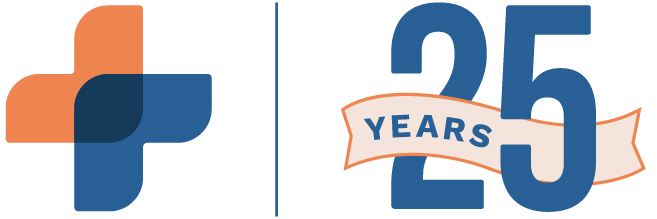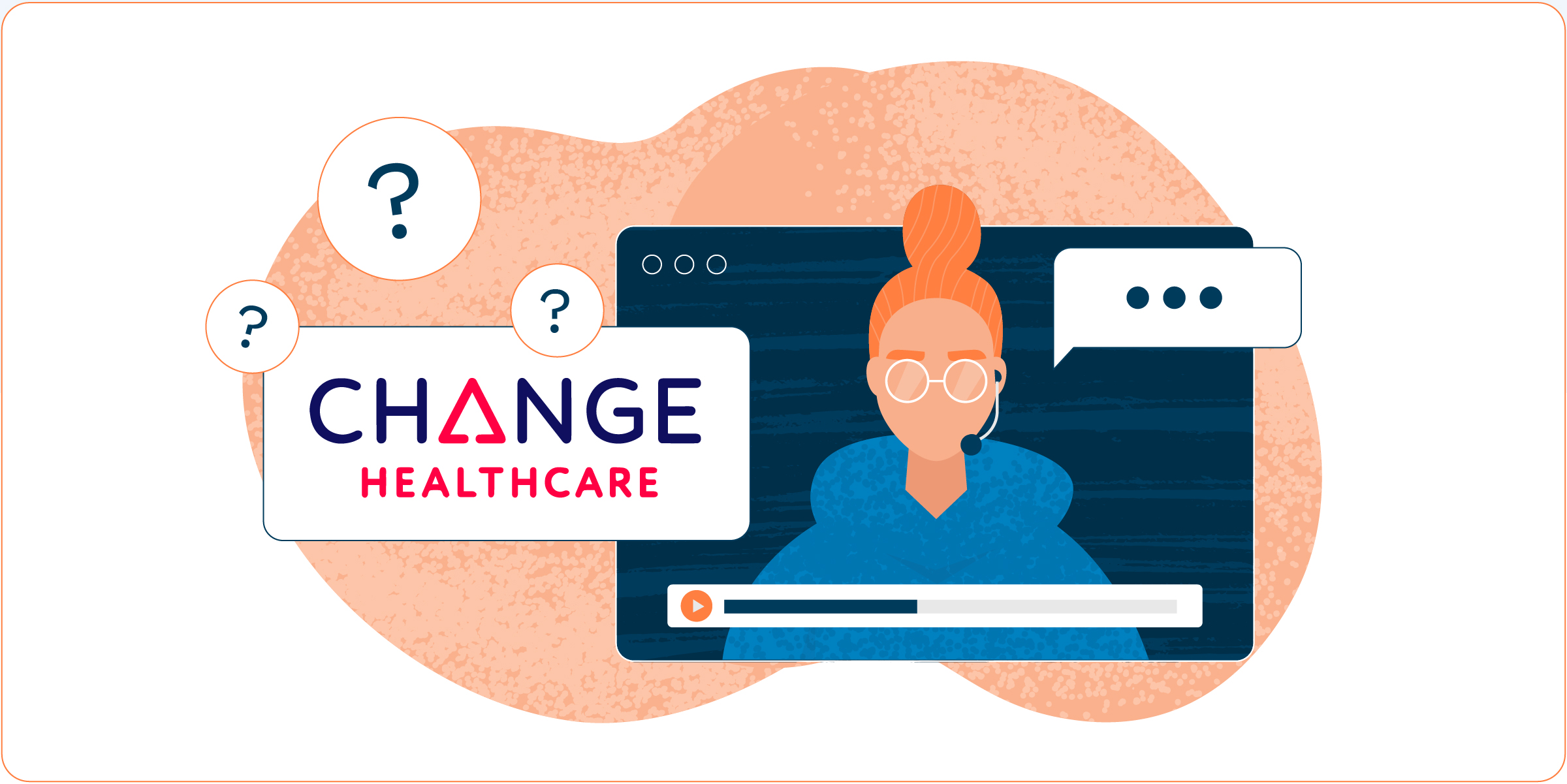How medical practices can navigate the Change Healthcare system disruption through financial assistance and technical workarounds.
Since February 21st, 2024, the entire healthcare community has grappled with the aftermath of a significant system outage affecting Change Healthcare. This disruption, resulting from a cyberattack, has had a devastating impact on the financial operations of medical practices across the country.
As the situation continues to unfold, it’s crucial for affected parties to keep up-to-date on the latest developments. To help RXNT customers stay informed, we have launched a new Change Healthcare updates page which will be regularly updated with new information and resources.
We also recently hosted a Town Hall to share resources and address common concerns. You can view the recording here, or read on. We’ve summarized the Town Hall’s contents in this post for your convenience and updated it to reflect the latest developments.
Note: This article is no longer being updated to include the latest news. For up-to-date information, go to our Change Healthcare Outage page →
What is the Change Healthcare Outage, and How Did it Impact Providers?
Change Healthcare—a medical clearinghouse that processes a substantial percentage of healthcare transactions—disabled its systems following a ransomware attack from a group of hackers on February 21st, 2024. This incident rendered many of its services inaccessible, including claims submission, ERA reception, eligibility checking, and more. The repercussions are challenging for small and large medical practices alike, exacerbating financial strains amid an already demanding healthcare landscape.
Efforts to resolve the outage are well underway, with UnitedHealth Group—Change Healthcare and Optum’s parent company—collaborating with law enforcement and third parties to restore services.
UnitedHealth Group has enabled a workaround for claim submission through its Intelligent EDI clearinghouse, otherwise known as IEDI. This means RXNT customers can submit claims as usual without re-enrolling with payers. Other capabilities, such as eligibility and statement printing services, may remain impacted for longer.
How is RXNT Maintaining Security Amidst the Uncertainty?
In light of these events, questions and concerns about security have arisen. The important takeaway is that RXNT has taken proactive measures to safeguard our systems. For more complete details, please read the information provided by our Chief Technology Officer, Thomas Kavukat, below.
“RXNT connects to Change Healthcare through a secure external connection. Change Healthcare’s systems do not have the necessary permissions on RXNT’s network, so the likelihood of an impact on RXNT is very low. To avoid any possibility of contamination, we severed all communication services with Change Healthcare’s systems” said Kavukat.
“RXNT’s cloud-computing platform is set up to automatically raise alerts if there are any unusual activities. To further confirm, we manually reviewed the scan results of all services for the past 30 days and did not detect any unusual activities. Our customers’ trust and their patients’ privacy are always our top priorities, and our Engineering team constantly works to ensure the best security possible.”
As an added security measure, we recommend clients update their RXNT password along with other account passwords to new, secure passwords that are not shared with their Change Healthcare accounts.
How to Navigate Financial Strains Caused by the Change Healthcare Outage?
Financial support options have become available to practices facing hardships due to the outage through Optum, and details of the available options can be found here. Their program is designed to help practices whose payment distributions have been disrupted by providing them with short-term assistance. Once normal service resumes, the funds will simply need to be repaid. There is a registration process to determine eligibility that can be completed on Optum’s website. Although RXNT is not formally endorsing this program, we do want to make our customers aware of its availability.
The HHS has also published several recommendations to ease the burden on hospitals and practices. For example, it is allowing providers to submit accelerated payment requests to their Medicare Administrative Contractors, similar to a process used during the COVID-19 pandemic.
As more support options become available, we will make every effort to share them with customers.
Implementing Workarounds for Key Functionality Within RXNT
There are four main areas impacted by the outage: claim submission, receiving ERAs, sending statements, and eligibility checks. We have identified workarounds for all four!
Until the IEDI workaround is implemented (or for practices that do not want to use it), we recommend sending claims directly via payer portals or dropping them to paper. Claims can also be queued up in RXNT by saving them after an encounter and then sending them in bulk when submission services have been restored. We have a more in-depth article on using the RXNT Utilities tab to easily manage claims EDI configuration and file downloads on our Help Center.
For ERAs, we recommend leveraging payer portals to view and download them. You can upload the 835 .txt file to RXNT within the Insurance Payments tab for easy allocation, or choose to post the payment manually. Learn more at our Help Center.
For statements, any such statements printed and mailed by Change Healthcare should not be sent to the clearinghouse during the outage. Instead, consider printing statements in your office and mailing them to patients, or use RXNT’s patient communication tools to text or email statements. This feature requires a subscription to our patient communication and payment processing products.
Lastly, for eligibility, we recommend leveraging payer portals or calling payers directly to check eligibility.
Frequently Asked Questions Around the Change Healthcare Outage
Can RXNT just switch to another clearinghouse service?
That’s an option, but we don’t currently believe it’s in the best interest of our customers.
Under ideal circumstances, identifying and contracting with a new clearinghouse would take us around 45 to 60 days. Then, our engineering team would have to make product changes to support the migration. After that, customers would be required to repeat their enrollment for all payers, which could take upwards of another 45 to 60 days.
It’s also worth noting that many other clearinghouses are dependent on Change Healthcare’s connections, which means that switching from Change Healthcare wouldn’t necessarily mitigate existing or future disruptions. That said, if further down the line the landscape changes, we’ll adjust our approach accordingly.
How can practices stay afloat until this is resolved?
Many practices across the country are struggling right now as a result of this outage. We want our customers to know that they are not alone in this time of uncertainty, and we’re here to help.
The Optum and HHS financial relief programs discussed earlier may be great options for some practices, and the workarounds we discussed earlier can also help practices keep their finances moving. Change Healthcare estimates that 85% of claims are being processed thanks to workarounds, so we’re hopeful that most practices will be able to maintain some degree of typical financial operation.
How should billing companies keep their customers informed during this outage?
The same information and workarounds we’ve shared today can be shared with their clients. Proactive communication on updates and working with customers one-on-one to find solutions is important to help providers navigate this situation. We’re happy to provide any tips based on our own experience.
How should providers talk to patients about this issue?
There are three things we recommend focusing on:
Firstly, many patients may not be aware of how these behind-the-scenes systems operate, so it’s important to explain why there may be disruptions in simple yet clear terms.
Second, set expectations. They need to know exactly how they will be impacted, how you’ll communicate about it, and what you’re doing to continue business-as-usual to your best ability. In particular, you should communicate about delays in receiving bills. It may take much longer than usual for patients to receive a bill for a service, but they will still receive one eventually, and it’s important for them to plan accordingly.
Third, there’s a very real possibility that a significant amount of patient data was compromised in the attack. We don’t know for certain how much or what kind of data that may be, or who will now have access to it. That’s obviously concerning for patients, but at this time, there are no details publicly available. The best you can do in regard to conversations about privacy is to keep them informed and show you’re there to help.
How to Stay Informed on the Latest Change Healthcare Updates?
Staying informed is paramount as we navigate this challenging period. Please utilize RXNT Customer Support, our in-product updates, and UnitedHealth Group’s updates page to stay updated on developments. We’re committed to supporting our clients through this difficult time and encourage proactive communication to address any concerns.
For further assistance or inquiries, don’t hesitate to reach out to us directly.
Contact RXNT’s Practice Management and Billing Customer Support Team
Hours: 8am – 8pm EST
Phone: (800) 943-7968, ext. 2 | Email: [email protected]
https://www.rxnt.com/contact-us





